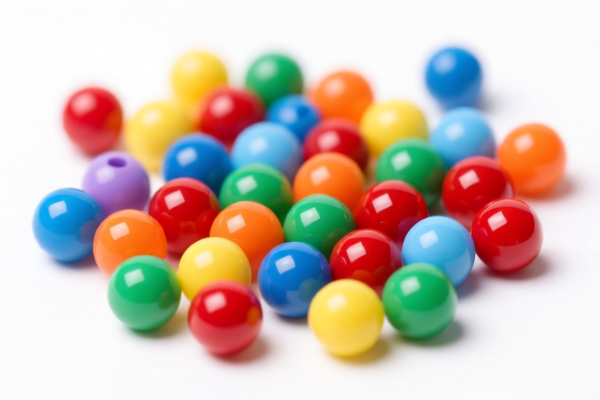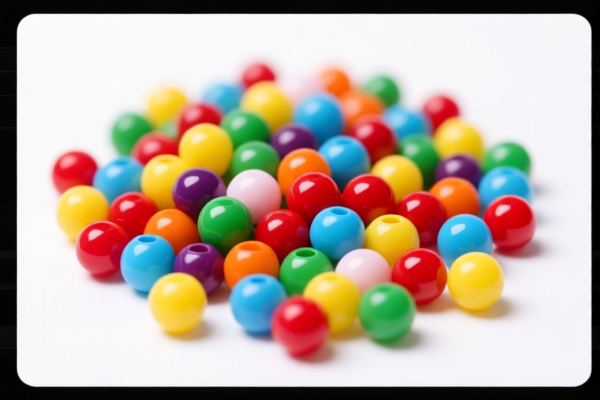| HS Code | Official Doc | Tariff Rate | Origin | Destination | Effective Date |
|---|---|---|---|---|---|
| 7103995000 | Doc | 48.0% | CN | US | 2025-05-12 |
| 7103991000 | Doc | 37.5% | CN | US | 2025-05-12 |
| 7116203000 | Doc | 39.6% | CN | US | 2025-05-12 |
| 7116204000 | Doc | 48.0% | CN | US | 2025-05-12 |
| 3926903300 | Doc | 36.5% | CN | US | 2025-05-12 |
| 3926903300 | Doc | 36.5% | CN | US | 2025-05-12 |
| 3901909000 | Doc | 61.5% | CN | US | 2025-05-12 |
| 3901905501 | Doc | 61.5% | CN | US | 2025-05-12 |




Stone Beads
Stone beads are beads crafted from various types of stone, historically and contemporarily used for adornment, spiritual practice, and trade. Their composition, function, and cultural significance vary widely based on the specific stone used and the region of origin.
Materials
A diverse range of stones are employed in bead making, each possessing unique characteristics:
- Agate: Known for its banding and variety of colors, often used for protection and grounding.
- Jasper: An opaque variety of chalcedony, available in numerous colors and patterns, traditionally associated with courage and strength.
- Turquoise: A vibrant blue-green mineral, highly valued in many cultures, particularly by Native American tribes, symbolizing protection and healing.
- Carnelian: A reddish-orange stone, associated with vitality and creativity.
- Lapis Lazuli: A deep blue stone, historically used in jewelry and pigments, often linked to wisdom and truth.
- Onyx: A banded chalcedony, typically black, associated with strength and discipline.
- Jade: A tough, durable stone, highly valued in East Asian cultures, symbolizing purity and longevity. (Note: both Nephrite and Jadeite are considered Jade)
- Quartz: A common mineral, available in clear and various colored forms (rose quartz, amethyst, smoky quartz, etc.), often used for clarity and energy amplification.
- Garnet: Typically a deep red stone, associated with passion and energy.
- Serpentine: A green stone, often associated with healing and renewal.
- Soapstone: A soft stone, easily carved, often used for pendants and carvings.
Purpose & Function
- Adornment: Stone beads are frequently used in necklaces, bracelets, earrings, and other jewelry forms for aesthetic purposes.
- Spiritual & Religious Practice: Many cultures attribute spiritual properties to specific stones. Beads are used in prayer beads (mala, rosaries), meditation, and healing practices. The stone’s color and perceived energy are considered important.
- Trade & Currency: Historically, stone beads served as a form of currency and were widely traded across regions.
- Amulets & Talismans: Certain stones are believed to offer protection, good luck, or specific benefits when worn as amulets.
- Ritual Objects: Used in ceremonies and rituals for their symbolic meaning and energetic properties.
Usage Scenarios
- Jewelry Making: The most common application, utilizing beads in various designs.
- Prayer & Meditation: Beads strung as malas (Hinduism, Buddhism) or rosaries (Christianity) for counting mantras or prayers.
- Healing Practices: Beads are used in lithotherapy (stone healing) and energy work.
- Home Decor: Beads are incorporated into decorative items, such as curtains, chandeliers, and art pieces.
- Fashion Accessories: Beads are used in clothing, bags, and other fashion items.
Common Types & Styles
- Round Beads: The most common shape, versatile and easy to string.
- Tubular Beads: Hollow beads, often used in trade beads and necklaces.
- Disc Beads: Flat, circular beads, used for spacing or creating unique designs.
- Faceted Beads: Beads with multiple flat surfaces, enhancing their brilliance.
- Carved Beads: Beads with intricate designs or figures carved into them.
- Trade Beads: Historically, these beads were manufactured for trade with indigenous populations, often featuring specific colors and shapes valued by those cultures. These are now highly collectible.
- Mala Beads: Typically 108 beads, often made of rudraksha, sandalwood, or other sacred materials.
- Rosary Beads: Typically 59 beads, used in Catholic prayer.
Stone beads fall under several classifications depending on their characteristics and processing stage. Here's a breakdown of relevant HS codes based on the provided information:
-
7103995000: This code covers “Precious stones (other than diamonds) and semiprecious stones, whether or not worked or graded but not strung, mounted or set; ungraded precious stones (other than diamonds) and semiprecious stones, temporarily strung for convenience of transport: Otherwise worked: Other: Other”. This applies to stone beads that are worked but not strung, mounted, or set, and are not specifically categorized elsewhere.
- Chapter 71: Relates to precious stones, gemstones, and pearls.
- Heading 7103: Specifically for precious stones (excluding diamonds) and semiprecious stones.
- Subheading 7103995000: Covers “Otherwise worked” stones that fall into an “Other” category.
-
7103991000: This code applies to “Precious stones (other than diamonds) and semiprecious stones, whether or not worked or graded but not strung, mounted or set; ungraded precious stones (other than diamonds) and semiprecious stones, temporarily strung for convenience of transport: Otherwise worked: Other: Cut but not set, and suitable for use in the manufacture of jewelry”. This is for cut stone beads intended for jewelry making.
- Chapter 71: Relates to precious stones, gemstones, and pearls.
- Heading 7103: Specifically for precious stones (excluding diamonds) and semiprecious stones.
- Subheading 7103991000: Covers “Otherwise worked” stones specifically “Cut but not set” and intended for jewelry.
-
7116203000: This code covers “Articles of natural or cultured pearls, precious or semiprecious stones (natural, synthetic or reconstructed): Of precious or semiprecious stones (natural, synthetic or reconstructed): Other: Of semiprecious stones (except rock crystal): Graded semiprecious stones strung temporarily for convenience of transport”. This applies to strung semiprecious stone beads, temporarily strung for transport.
- Chapter 71: Relates to precious stones, gemstones, and pearls.
- Heading 7116: Specifically for articles of pearls, precious or semiprecious stones.
- Subheading 7116203000: Covers articles of semiprecious stones that are “Graded” and “Strung temporarily for convenience of transport”.
-
7116204000: This code applies to “Articles of natural or cultured pearls, precious or semiprecious stones (natural, synthetic or reconstructed): Of precious or semiprecious stones (natural, synthetic or reconstructed): Other: Of semiprecious stones (except rock crystal): Other”. This applies to articles of semiprecious stone beads that are not specifically categorized elsewhere.
- Chapter 71: Relates to precious stones, gemstones, and pearls.
- Heading 7116: Specifically for articles of pearls, precious or semiprecious stones.
- Subheading 7116204000: Covers articles of semiprecious stones that fall into an “Other” category.
Important Note: The total tax rate for codes 7103995000 and 7103991000 is 48.0% and 37.5% respectively. Codes 7116203000 and 7116204000 have total tax rates of 39.6% and 48.0% respectively. Please consider the processing stage and intended use of the stone beads when selecting the appropriate HS code.
Customer Reviews
No reviews yet.